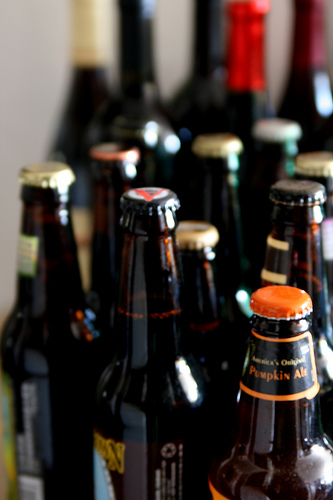Researchers at the Jean Mayer USDA Human Nutrition Research Center on Aging at Tufts University found in their study that in men and post-menopausal women who participated in regular consumption of moderate amounts of alcohol showed greater bone mineral densities.

The study’s participants were mainly over 60 years old and the associations for bone density benefits were the strongest for beer and wine. The study was published in the February 25th online edition of the American Journal of Clinical Nutrition.
However, this doesn’t mean you should finish off a six pack every night. The study also saw that heavy consumption led to significantly lower measurements in bone mineral densities. Men who drank more than two servings of alcohol a day had much lower bone densities than the participants who drank less. Researchers postulate that moderate consumption can help aid bone mineral density protection, while increased alcohol consumption can contribute to bone loss.
"Our study also looks at the possible effects of the three alcohol classes, beer, wine and liquor on BMD,” said Katherine L. Tucker, PHD and corresponding author of the study. "We saw stronger associations between higher BMD and beer drinkers, who were mostly men, and wine drinkers, who were mostly women, compared to liquor drinkers."
Tucker and fellow Tufts scientists took samples from 1,182 men and 1,289 post-menopausal and 248 pre-menopausal women. They analyzed bone densities from three hip sites and the lumbar spine and correlated to self-reported alcohol data. After ruling out other factors that could have influenced bone densities such as calcium intake and smoking, researchers saw a significant correlation between higher bone densities and moderate alcohol consumptions. But there is definitely a bell curve to this good news. Participants who drank more than two servings of liquor per day showed a much lower bone density, supporting previous studies that document heavy consumption of alcohol is devastating for bone health.

Bone loss in older men and women is one of the leading causes of osteoporosis, a weakening of the bones which can lead to injury and impairment due to falls, breaks and fractures of the weakened bones. According to statistics by the University of Pittsburgh, about 40% of elderly people (age 65 and above) fall every year. 20-30% of those who fall, are at least moderately injured. In the United States, falls are a leading cause of death and disability in elderly people. Approximately 1 in 20 older adults receives emergency department treatment each year, because of a fall.
The authors of the study speculate that the silicon found in beer is one of the contributing factors to the higher bone mineral densities in their participants. Previous studies have found that silicon is more readily used by the body when in a liquid, and sources like beer may provide a good source and protect bone densities.
"We cannot say definitively what component of these alcoholic drinks might be beneficial to bone health because our findings are from an observational study, as opposed to a clinical trial," said Tucker. "Future studies might dig deeper into patterns of alcohol consumption…whether the antioxidants found in wine, such as revesterol or polyphenols, have a protective effect on bone in addition to other health benefits."
Tucker KL, Jugdaohsingh R, Powell JJ, Qiao N, Hannan MT, Sripanyakorn S, Cupples LA, Kiel DP. American Journal of Clinical Nutrition. February 25, 2009 (online) "Effects of beer, wine and liquor intakes on bone mineral density in older men and women."




Comments